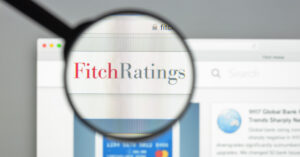Jamie Dimon, CEO of JPMorgan Chase, says that employees face alienation if things don’t change. Goldman Sachs CEO David Solomon called it “an aberration that we are going to correct as soon as possible.” But Apple’s Tim Cook and Microsoft’s Satya Nadella are comfortable with it, while the “Oracle of Omaha” himself, Warren Buffett, says it’s a change we all have to adjust to.
What is this crisis splitting the business community? Remote work. One of the many unexpected side effects from the COVID-19 pandemic, remote work remains controversial in many circles and might be feared in commercial real estate offices around the country.
We do agree that hybrid work is here to stay and we estimated companies are going to reduce the size of their real estate footprint by about 15%.
— Jessica Morin, research director, CBRE
One main worry is that remote work will end up damaging the office sector. It was mentioned in last month’s issue of Scotsman Guide Commercial Edition that a recent study predicts the current shift to remote work means that less office space will be needed in the future. New York City’s vaunted office sector could lose 39% of its value, or about $453 billion. The authors of the correlating study went as far as to call this an “apocalypse.”
Could this alarming report be true? Not according to Jessica Morin. Scotsman Guide spoke to the CBRE research director this past spring about the recovering office space sector. She was positive at the time and saw people coming back to the office. But a check-in with Morin was warranted after a CBRE research report noted that a post-Labor Day uptick in office use didn’t occur as much as expected, posing the question of whether we are about to be confronted by the four horsemen.
“We’re not calling for an apocalypse by any means,” Morin says with a laugh. “We do agree that hybrid work is here to stay and we estimated companies are going to reduce the size of their real estate footprint by about 15%.”
If CBRE’s estimate is correct, this would be a lot more palatable than the disappearance of 39% of the sector, but it’s still a pretty good chunk of the commercial office market. The CBRE report found that 46% of executives surveyed expected to need minimally or significantly smaller real estate portfolios during the next three years. Another 19% expected to stay the same, while 31% anticipated minimally to significantly larger portfolios. These answers aren’t particularly positive for a sector with new space coming on the market throughout the coming year.
As for the notion that hybrid workweeks and remote work are here to stay, that is the consensus among some experts. Morin says that CBRE expected to see a major surge of workers back to the office following this year’s Labor Day holiday. While the share of people working from the office jumped to about 49%, it wasn’t the surge many had anticipated.
Ben Wigert, director of research and strategy for workplace management at Gallup, wrote in an email that hybrid work is quickly becoming the norm for Americans, and it will likely be the future for many U.S. offices. According to Gallup research, hybrid schedules have been a larger part of the workplace than many of us realized. In 2019, nearly one in three U.S. workers already utilized a hybrid schedule, in which they spent anywhere from 10% to 90% of their workweek outside the office. About 8% of the workforce was exclusively remote, while another 60% were pure office drones. As of June 2022, 55% of employees were hybrid, 22% were exclusively remote and 23% were exclusively on-site.
This split is causing consternation in many circles, and not only with the titans of industry. Employers want to see their employees, make sure they are working and have them immersed in the culture of the corporate office. But this doesn’t sound too inviting to a lot of workers. CBRE found that 58% of company executives and 25% of workers felt that employees are coming to the office at a less-than-desired rate. At the same time, 55% of workers and 39% of executives thought employees were in the office at the right rate, while 3% of executives and 20% of workers say people are in the office too much.
To lure employees back, offices are offering more amenities, different space configurations and more perks. But will it work? The answer isn’t clear.
“We still see that there’s a disconnect between employees and employers about the satisfaction level concerning how often workers are currently visiting the office,” Morin says. “We are not yet at the point where employees and employers are equally satisfied with the balance. I think we’re going to continue to see this push and pull play out through the next year.”
Wigert is critical of the way executives gauge productivity, questioning whether their outdated methods work with a changing workforce. “Unfortunately, managers have long relied on the ‘butts in seats’ and timecard methods of management,” Wigert writes. “Today’s version of bad management focuses on activity rather than outcomes — keystrokes, logins and calendar activity rather than real measures of high performance such as metrics and progress toward goals.”
Morin says that executives need to communicate why the office experience is important, something many have struggled to do effectively. “For executives, the office is part of a company’s culture,” Morin says. “It’s part collaboration and sharing and mentorship for new employees, and helps them learn the corporate language and how to work with clients. Executives need to do a better job of explaining that.” ●








